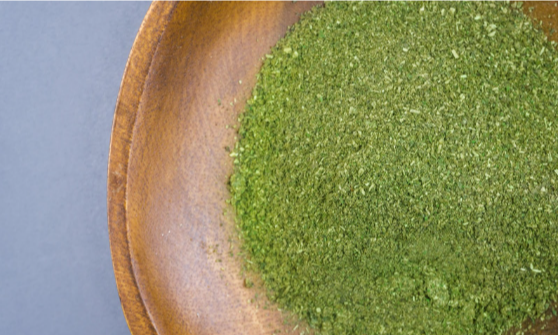Understanding proper kratom dosage represents one of the most important aspects of developing a positive relationship with this botanical supplement. Unlike standardized pharmaceutical products, kratom’s effects vary based on numerous factors including strain, individual biochemistry, tolerance, and intended use. This guide explores the principles of responsible kratom dosage to help users find their optimal balance.
Why Dosage Matters
Kratom exhibits what researchers call a “dose-dependent” effect profile, meaning different amounts produce distinctly different experiences. Lower amounts tend to produce more energizing and stimulating effects, while higher amounts typically create more sedating and relaxing experiences. This biphasic nature makes finding the right amount crucial for achieving desired results.
Taking too little may produce minimal effects, leaving users disappointed and wondering if kratom works for them at all. Conversely, taking too much can lead to uncomfortable side effects including nausea, dizziness, lethargy, and what users commonly call the “wobbles”—an unpleasant sensation of dizziness and nausea that can last several hours.
The goal is finding the minimum effective amount that produces desired results. This approach maximizes benefits while minimizing the risk of side effects and helps maintain kratom’s effectiveness over time.
General Dosage Guidelines
While individual needs vary considerably, general guidelines provide useful starting points for those new to kratom:
Threshold dose (1-2 grams): At this level, effects are subtle and may not be noticeable to everyone. Some people use threshold doses as a gentle introduction to gauge their sensitivity.
Low dose (2-4 grams): This range typically produces mild to moderate effects. Most users report increased energy, enhanced focus, and improved mood at these levels. Low doses are often chosen for daytime use when maintaining productivity is important.
Moderate dose (4-6 grams): Considered the sweet spot for many users, moderate doses provide pronounced effects without overwhelming intensity. This range may offer balanced benefits including both energizing and calming properties depending on the strain.
High dose (6-8 grams): Higher amounts tend toward more sedating effects regardless of strain. Users typically choose these amounts for evening use or when seeking maximum relaxation.
Very high dose (8+ grams): These amounts significantly increase the risk of side effects while not necessarily providing proportionally greater benefits. Most experienced users recommend against exceeding 8 grams in a single serving.
Starting Low and Going Slow
New kratom users should begin at the lower end of the dosage spectrum, typically around 2 grams. This conservative approach allows you to assess your individual sensitivity and how your body responds to kratom without risking uncomfortable side effects.
After trying an initial low amount, wait at least 4-6 hours before considering another serving. Kratom’s effects typically peak within 1-2 hours and gradually diminish over 4-6 hours. Taking additional amounts before the first serving has fully worn off makes it difficult to accurately assess how much you actually need.
If the initial amount proves insufficient, increase by small increments of 0.5-1 gram on subsequent occasions until finding your optimal level. This gradual approach helps pinpoint the minimum effective amount while avoiding overshooting into uncomfortable territory.
Factors Affecting Dosage Needs
Multiple factors influence how much kratom an individual needs to achieve desired effects:
Body weight and metabolism: Larger individuals generally require slightly more kratom than smaller people, though this relationship isn’t perfectly linear. Metabolic rate also affects how quickly kratom is processed and how long effects last.
Tolerance: Regular kratom use can lead to tolerance, requiring larger amounts to achieve the same effects over time. This represents one of the most important reasons to use kratom mindfully and take regular breaks.
Strain potency: Different strains and batches vary in alkaloid content and overall potency. A amount that works perfectly with one batch might be too much or too little with another, even from the same strain name.
Stomach contents: Taking kratom on an empty stomach typically produces faster, more intense effects. Having food in your stomach delays onset and may require a slightly larger amount to achieve the same results.
Individual biochemistry: Perhaps the most unpredictable factor, individual variation in how bodies process kratom means some people need more or less than others regardless of other factors.
The Tolerance Question
Regular kratom use can lead to tolerance, where the same amount produces diminished effects over time. This natural physiological adaptation occurs with many substances and can usually be managed through several strategies.
Rotating strains: Using different kratom strains on different days may help minimize tolerance to any single strain’s specific alkaloid profile.
Taking breaks: Scheduling regular days off from kratom use, often called “tolerance breaks,” allows your body’s receptors to reset. Even short breaks of 2-3 days can make a noticeable difference.
Keeping amounts consistent: Resisting the urge to continually increase amounts helps prevent tolerance from rapidly escalating. Finding your minimum effective amount and sticking to it rather than chasing stronger effects supports long-term sustainability.
Measurement Accuracy
Accurate measurement is essential for consistent dosing. While some users measure kratom in teaspoons, this method is imprecise because kratom powder density varies between grinds and can even vary within the same bag due to settling.
Digital scales that measure to 0.1 gram provide the most accurate dosing method. These affordable tools ensure you know exactly how much you’re taking, making it possible to fine-tune your approach and maintain consistency.
If using volume measurements temporarily, understand that a level teaspoon of kratom typically contains approximately 2-2.5 grams, but this varies significantly based on how finely ground the powder is and how loosely or tightly packed it is.
Working with Your Vendor
Developing a relationship with a reliable canadian kratom vendor provides valuable support for finding your optimal dosage. Quality vendors can offer insights about specific batches’ potency, help you understand differences between strains, and provide guidance when you’re uncertain about adjusting your approach.
When switching vendors or trying new strains, treat it as starting fresh with dosage assessment. Even if you know what works with your current products, a new strain or source might have different potency requiring adjustments to your usual amount.
Listening to Your Body
Perhaps the most important aspect of finding proper kratom dosage is paying close attention to how your body responds. Keep mental or written notes about what works and what doesn’t. Over time, you’ll develop an intuitive understanding of your needs that goes beyond general guidelines.
If you experience side effects, that’s your body signaling the amount was too high. If effects are minimal or shorter than expected, you might benefit from a slight increase. The goal is finding that sustainable sweet spot where kratom enhances your wellbeing without causing problems.

